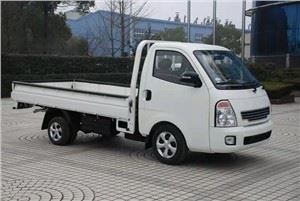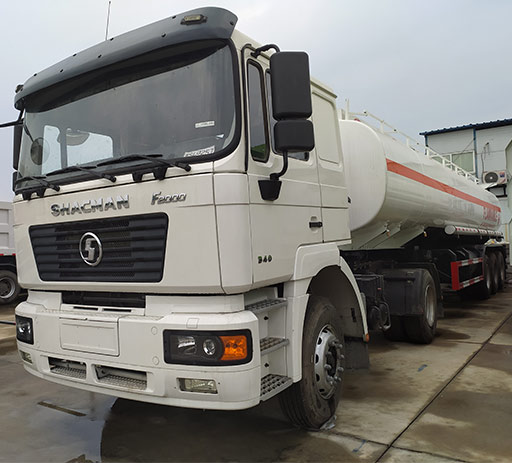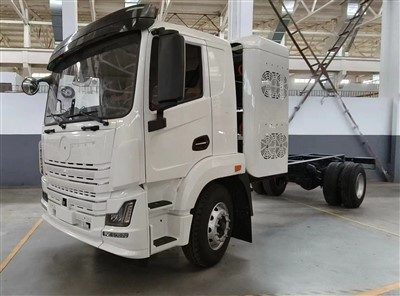Understanding Truck Tankers: Types, Uses, and Best Practices
Introduction to Truck Tankers
Truck tankers play a crucial role in the transportation of liquids, gases, and bulk materials across industries ranging from agriculture to petrochemicals. These specialized vehicles are designed to carry a wide variety of substances while ensuring safety and efficiency. In this comprehensive guide, we will delve into the different types of truck tankers, their applications, operational considerations, maintenance, safety practices, and much more.
1. What is a Truck Tanker?
A truck tanker is a motor vehicle designed to transport liquids or gases. The tank is mounted on the truck chassis and can be constructed from various materials, including steel, aluminum, and plastic, depending on the cargo. There are different types of tankers, each suited for specific uses.
1.1. Types of Truck Tankers
Truck tankers are categorized based on their cargo. Here are the most common types:
1.1.1. Fuel Tankers
These tankers are designed to carry gasoline, diesel, and other petroleum products. Fuel tankers are equipped with multiple compartments to transport different types of fuels at once.
1.1.2. Milk Tankers
Milk tankers are specially designed for transporting liquid dairy products like milk. They have insulation and refrigeration systems to maintain the temperature, preserving the quality of the milk during transit.
1.1.3. Chemical Tankers
These tankers are used to transport a wide array of chemicals, including hazardous materials. Chemical tankers must comply with strict safety regulations and are constructed with specific materials to prevent chemical reactions.
1.1.4. Water Tankers
Water tankers are utilized for transporting potable water as well as water for construction or agricultural purposes. They often have a basic design but can include features for filtration and treatment.
1.1.5. Dry Bulk Tankers
Though not as common as liquid tankers, dry bulk tankers transport dry goods such as grains, sugar, or fertilizers. These tankers can unload their cargo using pneumatic systems to ensure efficiency.
2. The Importance of Truck Tankers in Various Industries
Truck tankers serve vital functions in various sectors. Here are some industries where truck tankers are essential:
2.1. Agriculture
In agriculture, tankers transport liquid fertilizers and pesticides critical for crop production. Their role ensures that farmers receive essential chemicals in a timely manner, boosting productivity.
2.2. Food and Beverage
Truck tankers are pivotal in the food and beverage industry, particularly for transporting milk, juices, and other liquids. Proper sanitation and temperature control are imperative in this sector.
2.3. Oil and Gas
The oil and gas sector relies heavily on fuel tankers to deliver fuel to service stations and industrial locations. The efficiency and safety of these tankers are critical to maintaining supply chains.
2.4. Chemical Manufacturing
Chemical tankers facilitate the movement of raw materials and finished products within the chemical manufacturing industry. Their construction must adhere to strict safety standards to prevent leaks or spills.
3. How Truck Tankers Function
Understanding the mechanics of truck tankers is essential for their effective operation. Here’s how they function:
3.1. Structural Components
The primary components of a truck tanker include:
- Tank: The main container that holds the cargo.
- Chassis: The framework that supports the tank and includes the wheels and axles for movement.
- Pump: Installed in fuel and chemical tankers to facilitate loading and unloading.
- Valves: Used to control the flow of liquids in and out of the tank.
3.2. Loading and Unloading Processes
Loading and unloading procedures depend on the type of tank and the cargo being transported. For example, fuel tankers use pumps for transfer, while milk tankers often have specialized equipment to prevent spoilage.
3.2.1. Fuel Loading Procedure
Fuel loading involves connecting the tanker to the underground tank at a gas station using hoses and pumps. Safety measures, including grounding and leak detection, must be implemented.
3.2.2. Milk Unloading Procedure
Milk tankers often utilize a combination of gravity and pump systems to unload the product into storage tanks while ensuring hygiene and temperature control.
4. Safety Regulations and Compliance
Safety is paramount in operating truck tankers, especially when transporting hazardous materials. Various regulations govern the industry:
4.1. Regulatory Bodies
Agencies such as the Department of Transportation (DOT) and the Environmental Protection Agency (EPA) set forth regulations to ensure safety and environmental protection in tanker operations.
4.2. Licensing and Training
Drivers must obtain specific certifications and training to operate tankers, particularly for transporting hazardous materials. This includes understanding emergency response protocols and safety procedures.
4.3. Maintenance and Inspections

Regular maintenance and inspections are necessary for safe operation. Key areas of focus include:
- Tank integrity
- Safety valves
- Pumps and piping systems
5. Practical Tips for Truck Tanker Operators
To maximize efficiency and safety in operating truck tankers, consider the following tips:
5.1. Conduct Pre-trip Inspections
Before embarking on a journey, perform a thorough inspection of the tanker. Check for leaks, tire pressure, and proper functioning of safety equipment.
5.2. Understand Load Limits
Ensure that you do not exceed the tanker’s weight limits, as this can compromise safety and legality. Familiarize yourself with weight distribution and how it affects vehicle handling.
5.3. Communicate Clearly
Effective communication with dispatch teams and other drivers is crucial for safety. Keep everyone informed about your route, potential hazards, and expected arrival times.
5.4. Plan Your Routes
Planning your routes in advance can help avoid congested areas or hazardous roads, contributing to efficient deliveries and fuel savings.
6. Future Trends in Truck Tankers
The truck tanker industry is evolving, influenced by technology and environmental considerations. Here are some trends to watch:
6.1. Advanced Technology Integration
The integration of GPS and telematics is becoming standard in modern truck tankers, offering real-time tracking and data analysis to improve efficiency and reduce costs.
6.2. Eco-friendly Alternatives

As environmental concerns grow, there is a rising demand for hybrid and electric tankers. These alternatives promise reduced emissions and better fuel economy.

6.3. Automation in Operations
Automation and remote monitoring are gaining traction, helping streamline operations, enhance safety, and lower labor costs.
6.4. Increasing Safety Standards
Continued emphasis on safety regulations and compliance training is likely, as the industry responds to evolving safety concerns and incidents.
7. Trucks Tanker Maintenance Best Practices
Well-maintained tankers are crucial for safe operations. Here are some best practices:
7.1. Regular Cleaning
Cleaning the tanker is essential, especially for those that transport food or hazardous materials. Establish a cleaning schedule based on the type of cargo.
7.2. Lubrication of Moving Parts
Proper lubrication of moving parts can extend the lifespan of pumps and valves, enhancing performance and reliability.
7.3. Training Personnel
Investing in training for maintenance personnel ensures that they are well-versed in proper procedures and safety protocols.
7.4. Keeping Records
Maintain detailed records of maintenance and inspections. This documentation is critical for compliance and can assist in identifying recurring issues.
8. Frequently Asked Questions (FAQ)
8.1. What is the difference between a truck tanker and a regular truck?
A truck tanker is specifically designed to transport liquids or gases, while a regular truck is built for carrying solid goods. Tankers have specialized equipment, such as pumps and valves, to handle their cargo.
8.2. How do I choose the right tanker for my needs?
Consider the type of cargo, volume requirements, and regulatory compliance when choosing a tanker. Understanding these needs will help you select the appropriate type and size of tanker.
8.3. Are there different certifications required for driving a truck tanker?
Yes, drivers must obtain additional endorsements on their Commercial Driver’s License (CDL), particularly for transporting hazardous materials. Training covering safety protocols is also required.
8.4. What safety features should I look for in a truck tanker?
Look for features such as emergency shut-off valves, rollover protection, proper insulation (for temperature-sensitive cargo), and advanced monitoring systems.
8.5. How often should truck tankers be inspected?
Truck tankers should undergo regular inspections, at least annually, and more frequently if they transport hazardous materials. Routine pre-trip inspections are also necessary for safe operation.
8.6. What should I do in case of a spill or leak?
In the event of a spill or leak, prioritize safety. Evacuate the immediate area, activate emergency response protocols, and contact appropriate authorities. Training in emergency response is essential for all tanker operators.
